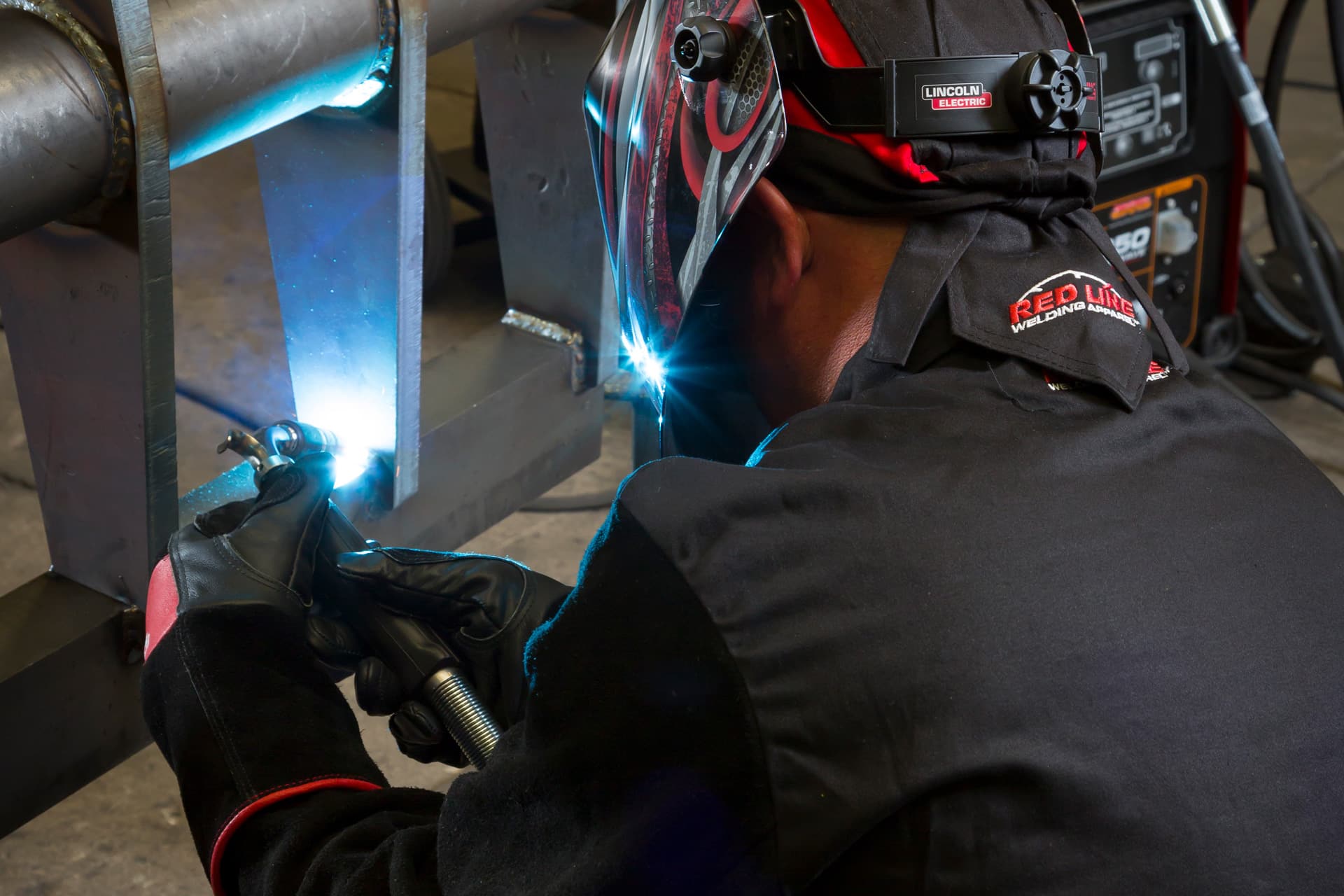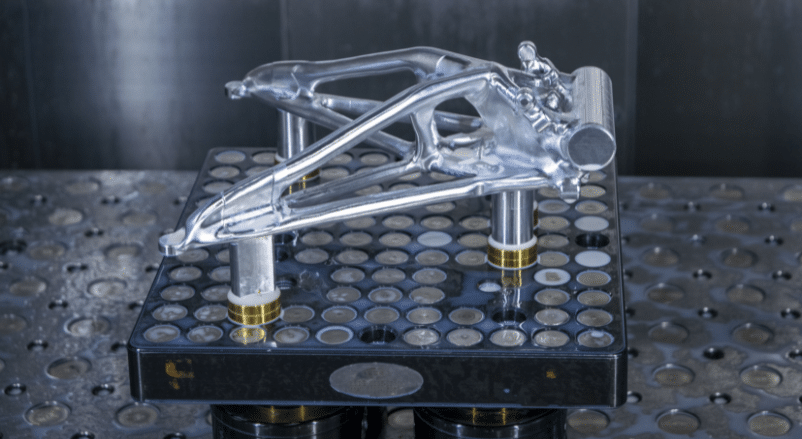In basic terms, CNC turning is a computer-controlled method where a piece of stock material is held in a chuck and rotated at a high speed while a cutting tool removes material to form the desired final shape.
CNC turning’s rise in prominence is due to the ability to create round and cylindrical parts that are difficult or impossible to machine with other techniques. These include high-performance parts and tooling used in demanding sectors like aerospace, defense, space, and power generation.
This guide aims to provide a comprehensive look into CNC turning, its process, exceptional capabilities, and advantages for your upcoming project.
What is CNC Turning?
CNC turning is a specialized subset of CNC machining. In technical terms, the process involves a piece of stock material rotated at high speed while a stationary cutting tool removes material to form a cylindrical, high-precision shape, typically for use in demanding applications such as engine components for the aerospace, defense, and space industries.
Understanding the Components
In CNC turning, the machine comprises several key components that together ensure efficient and precise machining.
Headstock
The headstock serves as the machine’s powerhouse, housing the spindle that provides the torque needed for the workpiece to rotate. This sets the stage for precision machining, allowing the machine to achieve tight tolerances in various applications.
Tailstock
The tailstock supports the opposite end of the workpiece, particularly useful when dealing with longer or unstable pieces. Its role is vital in ensuring a high-quality surface finish and stable machining environment
Tool Turret
This component holds the cutting or turning tools. Advanced CNC turning centers may feature multiple turrets, enabling different tools to be used quickly one after another, thereby increasing efficiency and reducing lead times.
Chuck
The chuck secures the workpiece in place, enabling precise machining. Chucks come in different forms, such as three-jaw or collet chucks, and are chosen based on the specific requirements of the operation.
Carriage and Cross Slide
The carriage houses the cross slide and moves longitudinally along the machine bed. The cross slide provides the necessary lateral movement to the tool turret, allowing for intricate cutting paths.
Control Panel
The control panel serves as the operator’s interface for programming and controlling the machine. It usually features advanced software that allows for the execution of complex geometries and high-precision tasks.
Types of CNC Turning Machines
Understanding the different types of CNC turning machines can help you make informed decisions about which machine is most suitable for your specific application. The basic categorization generally falls under the headings of turning centers and lathes, both of which can be either horizontal or vertical.
Horizontal Turning Centers
Horizontal turning centers are the most commonly used type of CNC turning machine. In these machines, the spindle orientation is horizontal, allowing gravity to help with chip evacuation.
This setup is especially beneficial for long, cylindrical parts and large production volumes. Horizontal turning centers often come with additional features like turrets with multiple tool holders and tailstocks for better support.
Vertical Turning Centers
Vertical turning centers feature a vertically oriented spindle, which allows the workpiece to be clamped vertically. This is particularly useful for handling heavy or unusually shaped workpieces that may be difficult to mount on a horizontal machine.
The vertical orientation also enables more comfortable access to the workpiece, making it easier for operators to observe and adjust the machining process.
Horizontal Lathes
Horizontal lathes are the more traditional and simpler form of the turning machine. While they lack some of the advanced features found in turning centers, they are highly effective for simpler, less complex jobs. Their horizontal orientation allows for easy chip removal and is generally more straightforward for operators to use.
Vertical Lathes
Vertical lathes function similarly to vertical turning centers but are generally less complex and more manually operated. They are ideal for machining large, heavy, or awkwardly shaped parts.
Because the workpiece is mounted vertically, it is easier to set up and check during operations. Vertical lathes are particularly useful in applications that don’t require the high levels of automation or multiple tool changes typically found in more advanced turning centers.
What Part Shapes Need CNC Turning?
CNC turning is an exceptionally versatile manufacturing process, but it excels particularly well in shaping certain types of parts. Below are the part shapes that are most commonly produced using CNC turning:
Cylindrical Parts
The most straightforward application for CNC turning is creating cylindrical shapes. Anything from simple cylinders and shafts to more complex profiles with varying diameters can be efficiently turned.
Flanged Components
Parts that require a flange, or a protruding rim, edge, or collar, can be accurately produced using a CNC turning process. This includes components like hubs or any part where a flange is needed for mounting or assembly.
Tapered Parts
CNC turning is excellent for parts that require a taper. Whether it’s a subtle taper or a more drastic one, the precise control of the CNC turning process ensures that the taper meets exact specifications.
Grooved Profiles
Grooves, whether they are O-ring grooves, threads, or other types of indentations, can be machined with great precision. This is especially useful in hydraulic systems, sealing applications, and threading operations.
Spherical and Contoured Shapes
While more complex than other shapes, it is possible to produce spherical and other contoured shapes with specialized CNC turning setups that include live tooling and multi-axis capabilities.
Hollow Parts
CNC turning is ideal for creating hollow parts, where the material is removed from the inside of a cylindrical workpiece. This is common in applications like pipes, tubes, and other hollow cylindrical shapes.
Knurled Surfaces
For parts that require a knurled surface for grip or aesthetic purposes, CNC turning provides the necessary accuracy and repeatability to achieve consistent knurling across large batches of parts.
Multi-Feature Parts
Advanced CNC turning centers with live tooling can produce parts that have a combination of these features, or parts that need both turning and milling operations, in a single setup. This reduces lead times and can improve the accuracy of the final part.
The CNC Turning Process
Programming
CNC turning operations start with programming. CAD (Computer-Aided Design) files dictate the shape, geometry, and features of the final part, which are used during setup and programming to create numerical control (NC) files.
NC files are text-based file formats that contain instructions for computer numerical control (CNC) machines in the form of G-code, a programming language that dictates the movement and operations the CNC machines must follow.
Programmers map out each movement, considering the types of turning required, whether it be taper turning, grooving, or threading.
Given the high tolerances often required, even minor errors in programming can lead to substantial defects, affecting the functionality and structural integrity of the machined parts.
Machine Setup
Before the actual turning operations can commence, the machine must be properly set up. This involves fixing the workpiece to a spindle situated within the headstock. Various configurations may be used to ensure that the workpiece is secured properly, allowing for both high-speed rotations and high-precision cuts.
The spindle speed is carefully selected to match the material being machined and the specific turning operation being performed. Coolants are often applied to reduce heat and friction, further enhancing the quality of the machining process.
Turning Operations
In the heart of the CNC turning process, cutting tools—often single-point tools—are used to remove material through operations such as grooving, threading, and knurling. Depending on the machine’s capabilities, multiple tools may be loaded into a tool turret, allowing for seamless transitions between different operations.
CNC Turning’s Unique Capabilities
The progress in turning technology has revolutionized the scope and scale of projects that can be undertaken. With next-level turning centers like the EMCO MECOF UMILL 1800 recently purchased by Baker Industries, a Lincoln Electric Company, the process is no longer restricted to straightforward geometries or limited material types. Learn more about the capabilities of these new turning machines by clicking here.
Advanced Design Geometries
Cutting-edge CNC turning machines bring unparalleled versatility to the table, enabling a broad spectrum of geometries that were once considered impractical.
The advanced software integrated into these machines translates intricate designs from CAD files into executable machine instructions, making even the most complex geometries achievable.
This expansion in geometric capabilities means that designers and engineers now have the freedom to explore more complex part designs without worrying about manufacturing limitations.
Material and Design Versatility
Modern CNC turning machines are engineered to work with a diverse array of materials. Whether you require stainless steel components for automotive applications or high-performance superalloys for aerospace engineering, today’s turning centers can handle the job with ease.
The inclusion of multi-axis capabilities in these centers further broadens the range of complex geometries they can accurately produce. These multi-axis functionalities also optimize tool paths, providing faster production times without sacrificing quality.
Meeting Extreme Tolerances
Industries like aerospace, defense, and power generation often require components that adhere to extreme tolerances, sometimes down to micrometers.
High-quality CNC turning centers can not only work with hard-to-machine materials but can also maintain tight tolerances that are crucial for these specialized applications.
Cutting-edge feedback systems within the machine continually monitor and adjust for any deviations, ensuring consistent quality.
High Thermal and Chemical Resistance
Beyond just mechanical properties, CNC turning centers excel in machining materials with high thermal and chemical resistance, such as ceramics and engineered plastics.
This specialized feature is critical for industries like petrochemical and aerospace, where components are exposed to extreme environmental conditions including high temperatures and corrosive atmospheres.
State-of-the-art cooling and lubrication systems further ensure process stability and quality, particularly when dealing with these challenging materials.
Advantages of CNC Turning Machines
CNC turning has several unique advantages, including the following:
Accuracy
CNC turning machines are calibrated to perform with extreme accuracy, often achieving tolerances down to micrometers. In sectors such as aerospace and medical manufacturing, where even a micron’s deviation can be critical, this level of precision is indispensable.
The consistency in accuracy across multiple runs further solidifies CNC turning as the go-to process for high-stakes, precision-dependent industries.
Flexibility
One of the standout advantages of CNC turning machines is their flexibility in handling a variety of tasks. From simple cylindrical parts to complex geometries and from one-off prototypes to high-volume production, CNC turning centers can adapt to meet different manufacturing needs.
The incorporation of multi-axis capabilities and tool changers expands the range of operations that can be executed efficiently, making CNC turning a versatile choice for an extensive array of industries.
Rapid Prototyping
CNC turning is highly efficient for producing prototypes. Given its programmability and the use of CAD files, creating one-off pieces or small batches for testing and validation is straightforward.
The quick turn-around time afforded by CNC turning is invaluable for companies in fast-paced sectors like automotive and consumer electronics.
Production Volume
Automated CNC turning centers, particularly those with vertical CNC functionalities, are designed for high-throughput, high-volume manufacturing. By handling multiple operations simultaneously or in quick succession, these machines drastically reduce the time from raw material to finished product.
The multi-axis capabilities also enable intricate operations, maximizing productivity and optimizing resource utilization.
Scalability and Automation
For large-scale production, CNC turning centers equipped with automatic tool changers and advanced robotics offer unprecedented scalability. Robotics further contribute to reducing human errors, enhancing both the speed and accuracy of mass production.
The adaptability of these systems allows for seamless transitions between different production stages, making them ideal for varied manufacturing needs.
Surface Finish Quality
A top-notch surface finish is crucial for extending the operational life of the part. This is particularly significant in applications where surface integrity has a direct impact on functionality.
The meticulous precision in CNC turning ensures that each part meets these critical requirements.
Safety
The level of automation in modern CNC turning centers minimizes human involvement, reducing both the margin for error and the risk of workplace accidents.
Advanced safety protocols such as automated system checks and emergency shutdowns further enhance the operational safety of these machines.
Find High-Quality CNC Turning Service Providers Near You
As technology continues to advance at an exponential rate, CNC turning is poised to remain at the cutting edge of manufacturing innovation. What sets Baker Industries, a Lincoln Electric Company, apart from the competition is our industry-leading capabilities in CNC turning.
We have the ability to turn some of the largest-diameter parts in North America, up to a remarkable 91 inches in diameter. This is complemented by our extensive experience in working with volatile materials, such as superalloys, making us a go-to solution for specialized applications like aerospace and defense.
Our advanced machining centers don’t just stop at turning; they also excel in other high-speed 5-axis CNC machining operations, which include additional in-house machining capabilities like milling and boring.
We further differentiate ourselves through our in-house and locally outsourced specialty finishes—such as black oxide coating and chem-conversion coatings—and capabilities in fabrication, 3D printing, assembly, finishing, quality assurance, program management, and design and engineering.
If you have a complex project requiring advanced CNC turning capabilities, reach out to our team at Baker Industries. Our expertise in delivering high-precision machined parts makes us the most reliable option for your upcoming project. Click here to submit an inquiry or request a quote.


